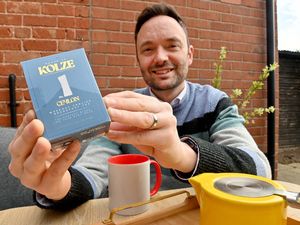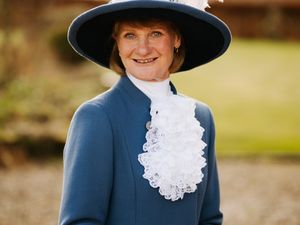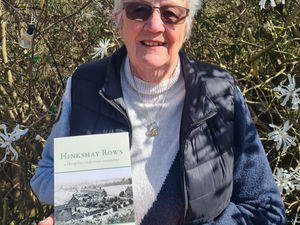Hidden disabilities which mean we should not judge a book by its cover
Cheryl Hayes is 67 years old, but looks at least a decade younger.
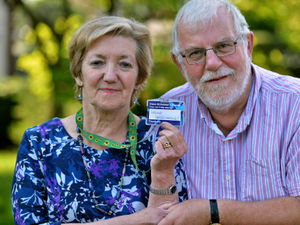
Bright and cheery, she taught French in several local schools before taking early retirement about 15 years ago. She appears to have the perfect life as she walks around the garden of her idyllic home on the edge of the countryside.
Occasionally she stumbles over her words, or becomes anxious about what is happening around her. But most of the time, the only indication that anything is amiss comes in the shape of a green lanyard around her neck. Decorated with sunflowers, and carrying a small badge bearing the words “You can help me by: being understanding!”
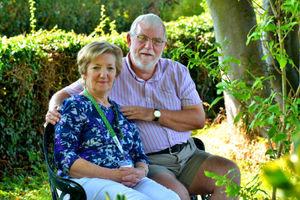
Three years ago Cheryl, who lives in Claverley with husband David, was diagnosed with Alzheimer’s disease. At the moment, she appears to be in the early stages of the illness, and is generally able to live a normal, independent life.
But for David, the restrictions surrounding the coronavirus outbreak has brought the difficulties faced by people with hidden disabilities into sharp focus.
“When we were in a supermarket, the woman in front of us in the queue said ‘don’t you understand social distancing?’ and I had to explain that my wife had Alzheimer’s and that she doesn’t understand,” he says.
“On another occasion we went into a shop together, and were told to leave because only one person was allowed in at once. When I explained that she has Alzheimer’s and that under the rules the two of us are counted as one person, the woman behind the counter just said ‘out, out!’
“Because she looks young, people think we are taking the mickey. Everybody expects people with Alzheimer’s to be old and doddery. But there are people younger than Cheryl who have got Alzheimer’s. We know people in their 50s.”
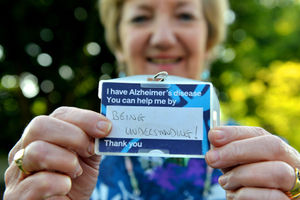
The sunflower lanyard scheme was introduced at Gatwick Airport in 2016 to identify passengers with hidden disabilities who may need extra help while travelling. Over the two years it has expanded.
So far, more than a million lanyards have been issued. There is no formal criteria to qualify for one, but typically they are worn by people with conditions such including Alzheimer’s, autism and diabetes. According to the scheme’s operator, one in five people in the UK now has a hidden disability of some sort.
Cheryl, who taught at the Buckpool, Holly Hall and High Arcal schools in Dudley, first began showing symptoms about seven years ago.
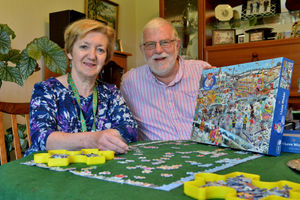
“At first it was just things like forgetting words, and saying odd things,” says David, who is 65.
He adds Cheryl had been able to lead a largely normal life before the lockdown began, driving a car and going shopping on her own. However, her condition requires her to take a driving test every six months, meaning her licence lapsed during the lockdown. David says the lanyard definitely helps, although there are still many businesses not aware of it.
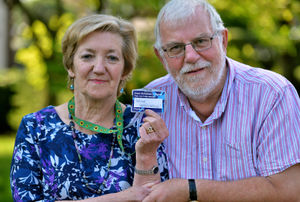
“I think the bigger companies do, it’s the smaller ones that don’t understand,” he says. “When we were flying back from Barbados in January, we got priority help with boarding,” he says. A lot of people are wearing them now.”
The Alzheimer’s Society broadly supports the lanyard scheme, although says it might not be for everybody.
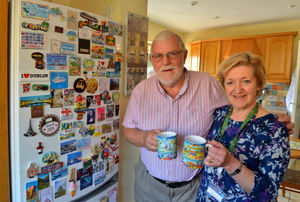
“The success of this type of scheme relies on public awareness,” Kumbi Mandinyenyg, Midland area manager for the charity says.
But the society says some people do have reservations about the scheme. These include people who don’t wear lanyards being overlooked, and whether it may stigmatise people with the condition.The society also says people with the condition may forget to wear their lanyard.
David says living with Cheryl’s condition has taught him about the need to be assertive, and he says that slowly, but surely, attitudes are changing.



